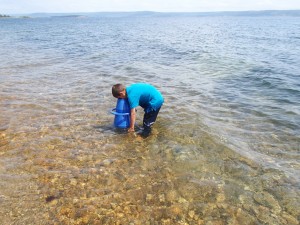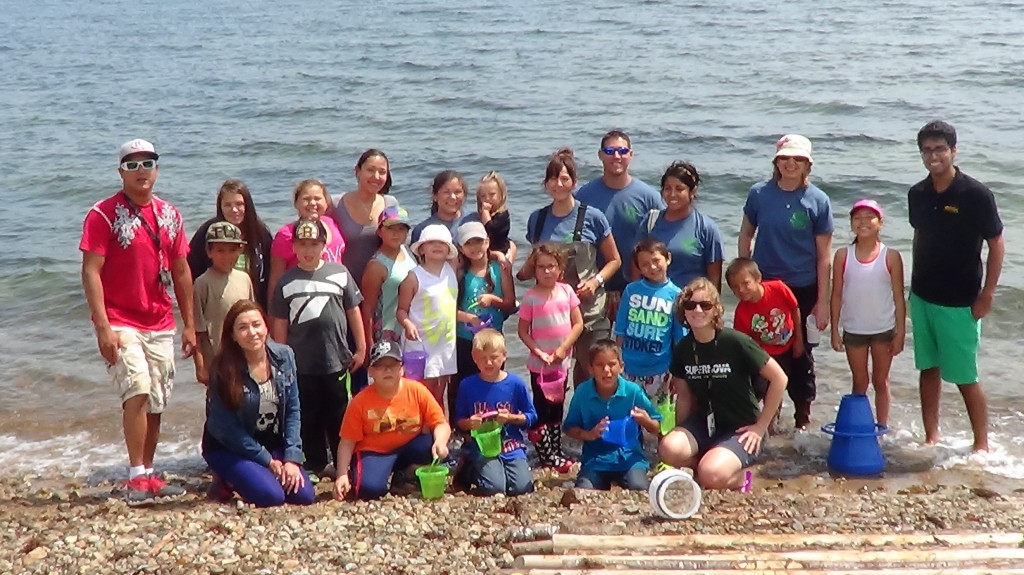Fish-WIKS News
» Go to news mainCommunity Engagement in Eskasoni, NS
here is nothing better than hearing youth engaged in a scientific debate – a debate over the best way to identify grass shrimp from sand shrimp for example.  In July, Fish-WIKS Atlantic region team members, Shelley Denny, Tyson Paul, Stephanie Boudreau, and Amber Giles, had the pleasure of partnering with SuperNOVA for an afternoon of such debates and some hands-on science. Along the shore of the beautiful Bras D’or Lakes in the Fish-WIKS partner community of Eskasoni, with science campers from Eskasoni and community members, a beach seine was used to collect various organisms. Science campers were given identification cards and set free to explore and identify small fish and invertebrates.

Science camper uses an underwater viewer to search the shallow waters of the Bras D’or for fish.
It was an amazing opportunity to discuss themes of the Fish-WIKS research with youth, such as “How do you know what you know?”. We started our time with the youth by going around a circle and inviting each camper to share a story about a time they had been fishing. Some of the campers were too shy, some spoke a few words, and some shared long elaborate (possibly embellished) stories of the time they caught a giant fish. It was fantastic to hear their enthusiasm about fish and the environment, as well as their curiosity.Thank you to the community of Eskasoni for hosting us, as well as to Ěý˛ą˛Ô»ĺĚý for helping to coordinate.

Recent News
- Muiwatmnej Etuaptmumk Conference 2023 LiveStream
- Knowledge Pluralism in First Nations’ Salmon Management
- Learning Lodge on Mi’kmaw Livelihood Rights
- RoseAnne Archibald elected as national chief of Assembly of First Nations
- Mary Simon named as Canada’s first Indigenous governor general
- Mi'kmaw‑Led Conservation Webinar Series ‑ Thurs March 25 at 6 pm
- FishWIKS team members Lydia Ross and Lucia Fanning publish paper on informed management decision‑making
- FishWIKS team member Nicole LaTulippe co‑authors paper on need to make way for Indigenous research leadership
